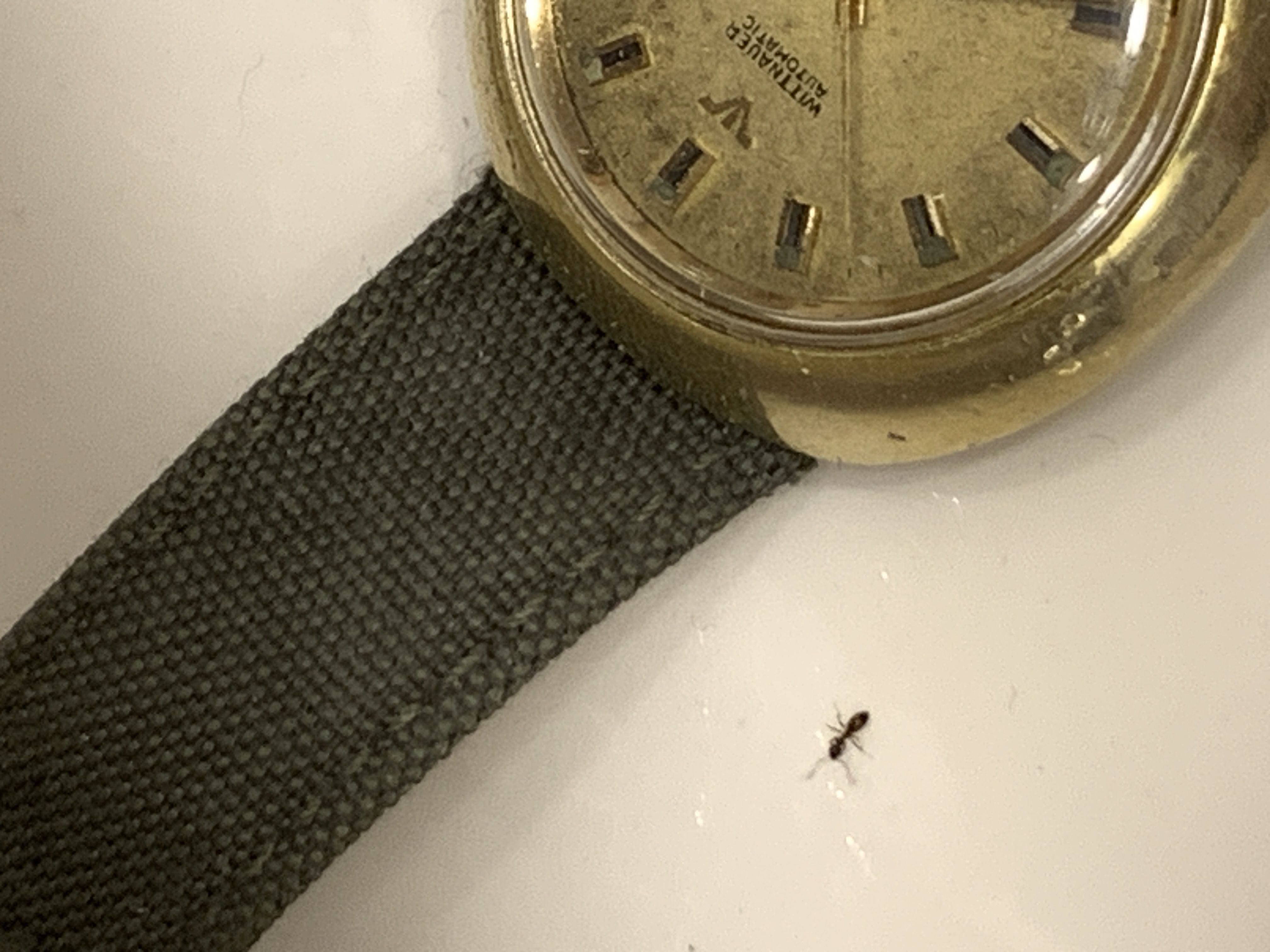I like my coffee immediately upon consciousness in the morning. That requires a fast coffee maker, which we have. It maintains a reservoir of hot water at all times and is ready with no notice to produce coffee.
Recently, after eleven years of exemplary service, that coffee maker sprung a leak. Water began to pool on the counter underneath it. Bryan picked up the coffee maker to make room for the new one, disturbing what turned out to be bazillions of the tiniest ants you can imagine. They formed a line and headed for a miniscule crack behind the sink. Some of them were carrying what we took to be eggs as they scurried away.
These ants had built a nest inside the coffee maker. Apparently, they liked the warmth in there and the ready source of water. There were probably a few crumbs on the counter to add to their enjoyment.
The ants were so tiny, about a millimeter long, that it was hard to tell what species they were. Some research led to two possibilities: thief ants (Solenopsis molesta) or pharaoh ants (Monomorium pharaonis). We call all tiny ants like these grease ants, because they are particularly fond of grease and protein sources. They’ll eat sugary things, too.
Thief ants live in colonies either inside or outside. They’re called thief ants because ideally what they will do is build their nest near another ant colony. Then they’ll tunnel over to the other ant colony and invade it. They’re so tiny they can get away with a lot of infiltration before they’re discovered. While they’re there, they will steal the host ant’s larvae, eggs, pupae and stored food and, through a series of cleverly designed, and very tiny, tunnels, they’ll take their booty back to their own nest to share with their own colony.
If there isn’t another ant nest nearby, as when they build their nest in my coffee maker, in cracks, under floors or inside walls, they will go about finding other sources of food.
The role of the queen in a thief ant nest is to mate and lay eggs. The mating ritual involves swarms of drone and virgin queens having a big party on a late afternoon in late summer. Clouds of these tiny ants fly around till they find their mate and copulate in midair, and then the drones die, and the queens drop to the ground and find a place to build a nest. The queen loses her wings and becomes an egg-laying machine, laying a hundred eggs per day, fertilized by sperm she has stashed in a closet. The wise virgins carry along a few worker ants so that when she starts building her nest she has help. If not, she has to tend to the first batch of “children” on her own.
Thief ants don’t restrict their pilfering to other ant colonies. They’re happy to eat the eggs and larvae of Japanese beetles and other pests.
Pharoah ants are about the same tiny size, and, apparently, can be distinguished from thief ants by counting the segments of their antennae—ten for the thief and twelve for the pharaoh. You’d need a microscope to do it though.
Also known as sugar ants or piss ants, pharaoh ants are thought to have originated in Africa. Like the thief ants, they’re yellow to brown in color, with six legs and a segmented body. Unlike the thief ants, pharaoh ants don’t swarm to mate. Instead, when a colony gets too big, the workers and a queen set off to find another good location and start a new colony. Called budding, the new colony may have one or many queens. Pharoh ants can infest a home or a hospital by traveling along electrical wires, pipes and other infrastructure. They like to establish their nests near a source of warmth and water.
The history of the name pharaoh ant is murky, but one source suggests that they are so named because they were thought to constitute one of the ancient plagues of Egypt. They certainly are a plague in our houses! They’re harder to get rid of than the thief ants because of this budding process.
So, which will it be? Thief or pharaoh? I’m intrigued by the thief ants, but I’m afraid that what we saw were pharaoh ants heading off to find a new place to nest, eggs and all. Or maybe they were something else? There are thousands of species of ants after all. What do you think?
Photo by Author. Alt text: A minuscule ant about 1mm long, is pictured from above on a white countertop next to a gargantuan wristwatch and band for scale. Pharoah (or Thief) Ant.

2 comments
Wow, Karen. Your coffee maker lasted 10 years!?
I get these tiny ants, too. My question is: how do I get rid of them?
Thanks for the terrific info, Karen. – Joe
Good question! For Pharoah ants, check out this link: from Ohio State University:
https://ohioline.osu.edu/factsheet/HYG-2136-10
For thief ants, try this link from Iowa State University:
https://yardandgarden.extension.iastate.edu/encyclopedia/grease-ant